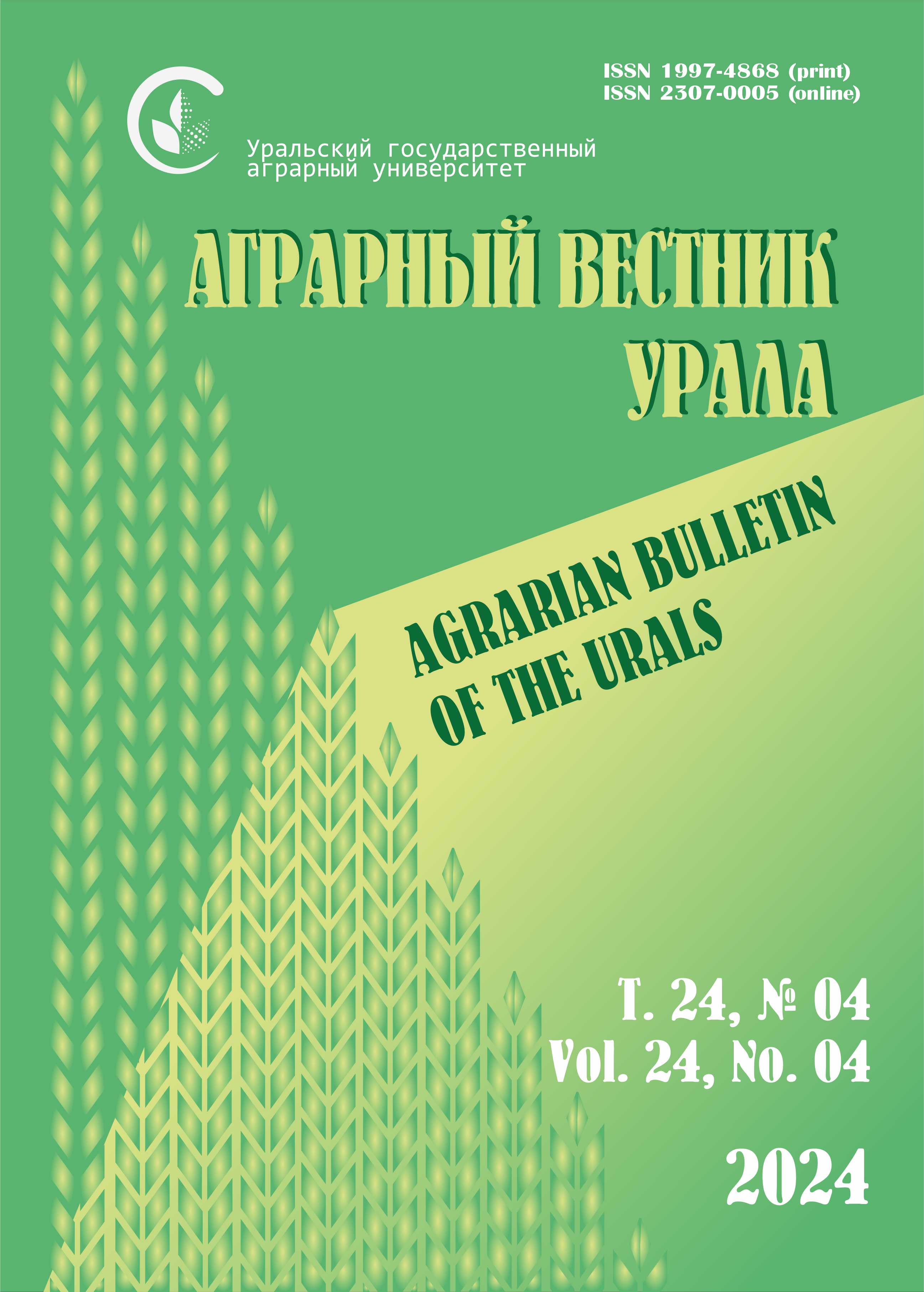Authors:
A. E. Panfilov1*, N. N. Zezin2, P. Yu. Ovchinnikov2
1 South Ural State Agrarian University, Troitsk, Russia
2 Ural Federal Agrarian Research Center of the Ural Branch of the Russian Academy of Sciences, Ekaterinburg, Russia
*E-mail: This email address is being protected from spambots. You need JavaScript enabled to view it.
Abstract. The purpose of the research is to identify the dependence of corn’s yield and quality parameters on its vegetation conditions and assess the crop’s productive potential in various soil and climatic zones of the Ural region. Scientific novelty. In contrasting soil and climatic zones on a comparable agrotechnical background, the factors limiting the size and quality of the corn harvest are determined. Methods. The initial data for the analysis were obtained in 2019-2021 by laying model sites in production crops of ultra-early corn hybrids. The research was carried out in five soil-climatic zones of the Southern and Middle Urals (mountain-forest zone, forest-meadow, northern forest-steppe, southern forest-steppe and steppe) on the territory of four subjects of the Federation in 16 geographical locations. Accounting for the biological harvest of corn was accompanied by its structural analysis with the allocation of fractions: stem, leaves, grain, rod, wrapper, cob leg and sampling for zootechnical analysis. Results. The maximum yield of corn grain and starch harvesting from 1 ha were provided by the conditions of the southern forest-steppe zone, which were characterized by the values of the hydrothermal coefficient from 0.8 to 1.0. Both increased moisture in the conditions of heat deficiency of the mountain-forest and forest-meadow zones and lack of moisture against the background of high heat supply of the steppe zone had a negative impact on the productivity and quality of the crop. The condition for improving the quality of the harvest and the collection of corn starch in the north of the region is the cultivation of hybrids with the earliest ripening belonging to the FAO group 100-120, as well as the use of advanced crop harvesting technologies that ensure the harvesting and preservation of wet grain and cobs without leaf-stem mass. To increase the productivity of corn in the steppe zone, it is necessary to select hybrids with reduced evapotranspiration, the use of moisture-saving agricultural technologies, the justification of agricultural techniques that allow to increase the efficiency of the use of atmospheric moisture.
Keywords: corn, ultra-early hybrids, soil and climatic zones, heat and moisture resources, biological productivity, crop structure, exchange energy, starch.
For citation: Panfilov A. E., Zezin N. N., Ovchinnikov P. Yu. Biologicheskaya produktivnost’ ul’trarannikh gibridov kukuruzy v razlichnykh pochvenno-klimaticheskikh zonakh Ural’skogo regiona [Biological productivity of ultra-early corn hybrids in various soil and climatic zones of the Ural region] // Agrarian Bulletin of the Urals. 2022. No. 03 (218). Pp. 35–47. DOI: 10.32417/1997-4868-2022-218-03-35-47. (In Russian.)











